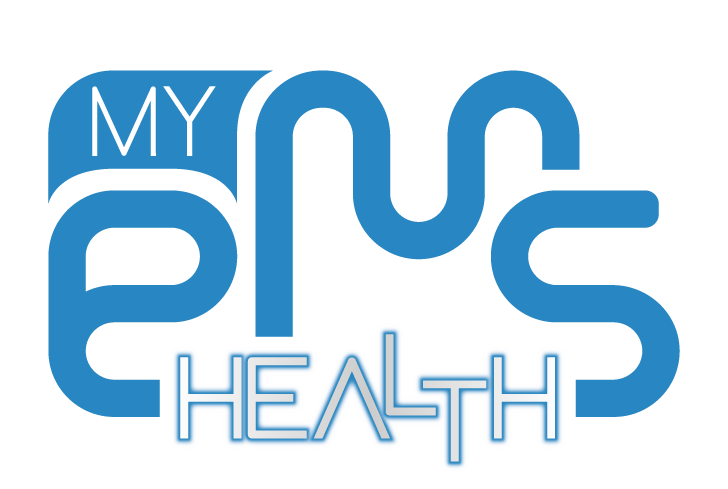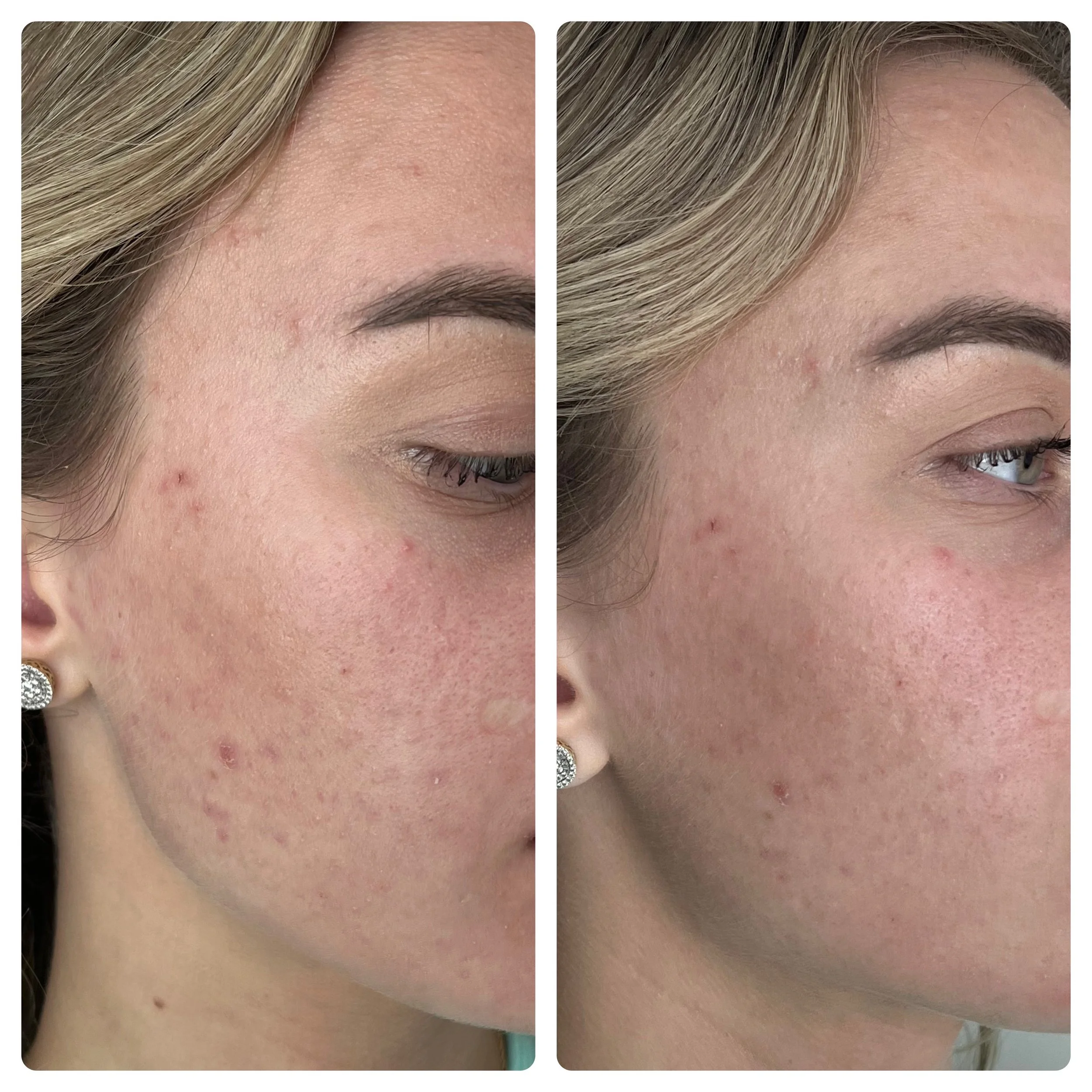
Illuminate your skin with professional LED light therapy
Renew Skin Vitality with Celluma LED Light Therapy
Skin care at its best
Low-level light therapy (LLLT) administered through high-intensity light emitting diodes (LED diodes) has emerged as a prominent science in the realm of skincare, garnering widespread popularity within aesthetic circles. This innovative approach offers a multitude of benefits aimed at enhancing skin health, tone, and texture, making it a sought-after treatment option for individuals seeking non-invasive and effective skincare solutions.
Celluma light is an FDA approved LED light therapy device that emits blue, red, and near-infrared wavelengths. Blue LED light addresses acne issues, while red and near-infrared LED light decrease inflammation and increase micro-circulation to bring more oxygen and nutrients to the area. In aesthetics, red and near-infrared are particularly desirable for their ability to stimulate fibroblast activity and boost collagen and elastin production. Unlike any other LED red light therapy device on the market, Celluma LED devices offer a large treatment area that can contour around any body part including the face, neck and décolleté, as well as back, hands, feet, shoulder and knees. Relaxing and rejuvenating, the Celluma light therapy can be used as a powerful stand-alone or adjunctive modality following a variety of services including facials. The device can be applied to different body parts while other body sculpting procedures are performed as it reduces inflammation and stiffness and alleviates pain related to arthritis, muscles, and joints
What to know about acne and blue light
The medical aesthetic industry employs blue wavelengths to combat acne by eliminating the bacteria that causes it. Utilizing a blue and red light device can provide a multifaceted approach to acne control, where the blue light energy removes the acne-causing bacteria, while red light assists in the healing of acne lesions, as well as the associated redness and inflammation.
Acne vulgaris treatment requires a blue wavelength (color) within the range of 400-470nm. Unlike red and near-infrared light therapies, blue light is not used to upregulate mitochondrial function. Instead, it creates a photo-toxic event specifically designed to target C. acnes bacteria.
To quote renowned researcher, Dr. Michael Hamblin, "One mechanism of action of phototherapy is via the excitation of porphyrins generated by C. acnes as part of its normal metabolism. These porphyrins act as endogenous (produced within the cell) photosensitizers, absorbing light (specifically blue and to a lesser extent, red) and stimulating photochemical reactions that generate free radicals and single oxygen species that are toxic for C. acnes."
The phototherapy mechanism can be perplexing, but this approach has shown promising results in the treatment of acne. While red and blue light therapies have been gaining popularity in the medical aesthetic industry, it's essential to understand that they work in different ways.
Incorporating blue light energy into acne treatments is a bursty approach that can be used in combination with red light to create a comprehensive treatment plan. As a result, patients can see improvements in their skin's texture and overall appearance especially when it comes to making pimple marks go away.
We highly recommend scheduling a consultation with one of our aestheticians to assist you in selecting the most suitable procedures that will provide enduring and fulfilling results.
Before and After
Acne Treatment - After First Procedure
The benefits of light therapy for pain management
1. Effective pain relief
Light therapy has demonstrated remarkable efficacy in reducing pain levels. Whether it's chronic pain conditions, postoperative discomfort, or sports injuries, numerous studies have shown significant pain reduction following light therapy treatments. By targeting the underlying causes of pain at the cellular level, this therapy provides relief without the adverse side effects often associated with medications.
2. Accelerated healing
In addition to pain relief, light therapy accelerates the healing process. The increased ATP production and improved circulation promote tissue regeneration and repair. This not only speeds up recovery but also minimizes scar tissue formation and speeds up disappearance of pimple marks allowing individuals to regain function and mobility more quickly.
3. Versatile applications
While light therapy encompasses a wide range of applications across various medical fields, it has shown promise in alleviating symptoms associated with arthritis, fibromyalgia, neuropathy, and other chronic pain conditions.
4. Non-invasive and safe
One of the significant advantages of light therapy is its non-invasive nature. Unlike surgical interventions or pharmacological treatments, light therapy poses minimal risks and side effects. It is a safe and well-tolerated approach, suitable for individuals of all ages, including children and older adults.
Harnessing the power of light for pain relief
Light therapy has proven to be a game-changer in the realm of pain management. By leveraging the healing properties of light, individuals can experience effective pain relief and accelerated healing without relying solely on traditional methods. The versatility and safety of light therapy make it an attractive option for those seeking natural alternatives to alleviate pain and promote overall well-being.
Light therapy offers a compelling solution for pain management. Its ability to stimulate cellular responses and promote healing makes it an invaluable tool in combating various types of pain. Whether you are struggling with chronic pain or recovering from an injury, light therapy presents a non-invasive and effective approach to enhance your well-being. Embrace the power of light therapy and discover a new path to pain relief and improved quality of life.
-
Whether you want to enhance the effect of healthy, youthful glow, leave the stress of acne behind after the cryo facial or even ease pain related to arthritis, muscles, and joints, Celluma light therapy will improve the overall condition of your skin and help with a variety of pain management.
30 min. $75.00 Book appointment
-
Most people need twice a week sessions for four to five weeks, but this will depend on the severity of symptoms and how well the acne responds to therapy. For some people, two to four weeks of treatments are enough. After symptoms improve, regular monthly treatment can help manage them.
LED Light Therapy Package 10 sessions 30 min. $445.00 ($44.50 per session) Buy now
FAQ
-
Low-level-light therapy or photobiomodulation is based on Light Emitting Diode (LED) technology and is the application of light energy to the body for therapeutic benefits. It promotes a natural photobiochemical reaction similar to the process of plant photosynthesis. The energy delivered by the LEDs has been shown to enhance cellular metabolism, accelerate the repair and replenishment of damaged skin cells, as well as stimulate the production of collagen — the foundation of healthy, smooth skin. Research has shown that LED light therapy may help smooth skin texture, improve skin firmness and resilience, increase lymphatic system activity, restore skin’s natural cellular activity, and reduce the appearance of fine lines, wrinkles, and superficial hyperpigmentation. The treatment is for all skin types, and is non-ablative, non-invasive, painless, and requires absolutely no downtime. Patients or clients can return to their normal activity immediately after the treatment.
-
Based on extensive research, low-level-light therapy devices have been cleared by the FDA, and shown to manage:
Mild to moderate acne vulgaris
Superficial, benign vascular and pigment lesions
Periorbital wrinkles and rhytides
Sub-optimal local blood flow and circulation
Minor muscle and joint aches
Minor muscle and joint pain
Pain and stiffness associated with arthritis
Minor arthritis or muscle spasms
Minor chronic neck and shoulder pain of a musculoskeletal origin
-
Clinical trials and hundreds of laboratory studies demonstrated that Light Therapy has no negative side effects. It has been proven to heal soft tissue injuries and relieve pain without using harmful drugs and pain killers.
-
Low-level-light therapy is based on light emitting diode (LED) technology developed for NASA-manned space flight experiments. In comparison to lasers, the patented LED technology generates negligible amounts of heat and is not considered a significant risk device.
-
No. Celluma utilizes a combination of blue, red, and near-infrared (not visible to the naked eye) light emitting diodes (LEDs) only.
-
Many makeup formulas contain minerals that may deflect light. Clean, freshly washed skin is recommended for best results.
-
Yes. You may resume all normal activities immediately following use.




